Question 1
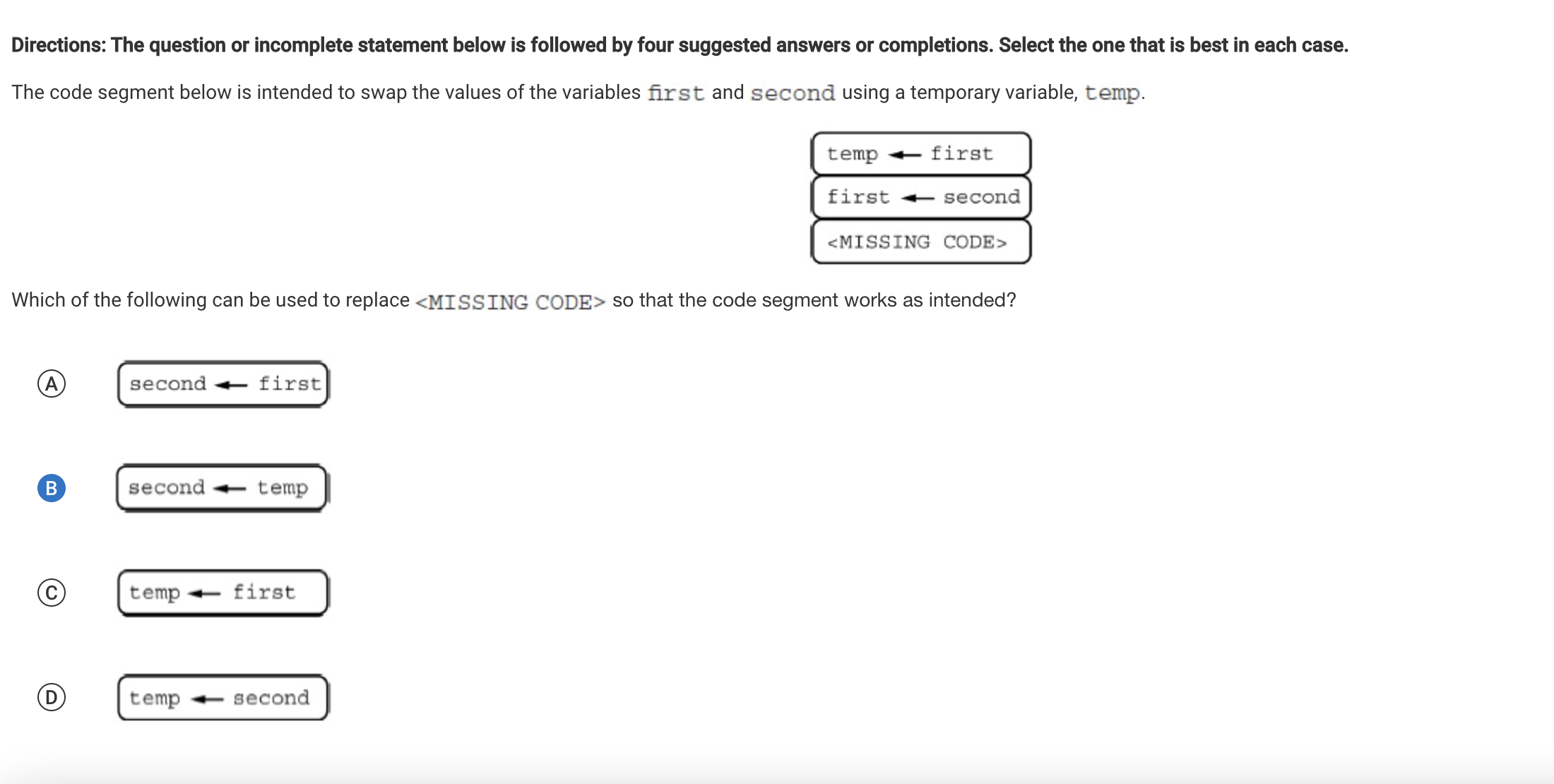
This is my first introduction to pseudo code, and I am introduced to the concept that the arrow is the equivalent of a python equal sign.
Question 5
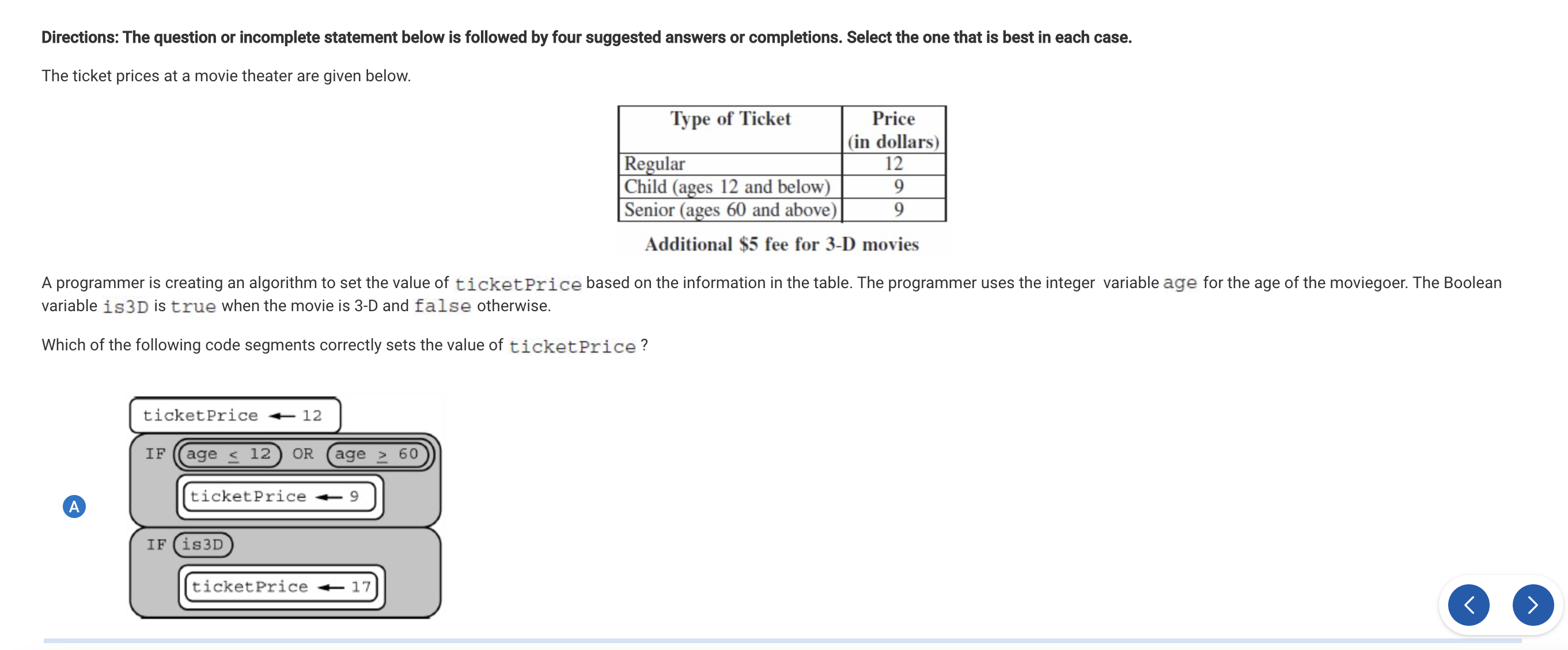
This is the first problem with pseudo code that I had to genuinely sit and think about. It wasn’t very hard to figure out but it was very fun to realize I completely understood it.
Question 21
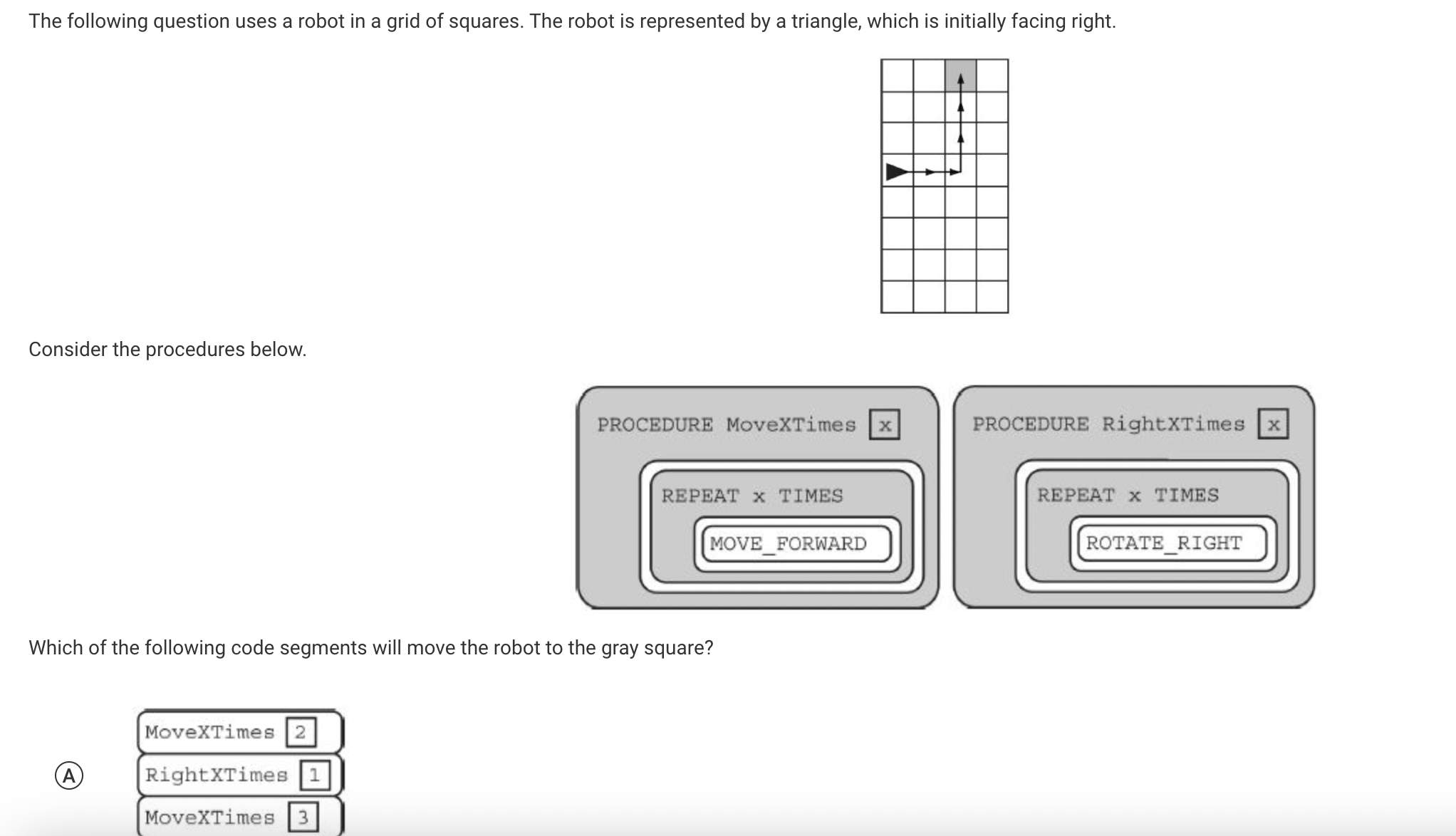
This was another problem I encountered with pseudocode that was quite fun to figure out as it had real life applications. In this code, I had to figure out the algorithm to move the robot to the gray square. It was interesting to overcome the challenge of getting to robot to complete a 270 degree turn but it was fun to accomplish.
Question 27
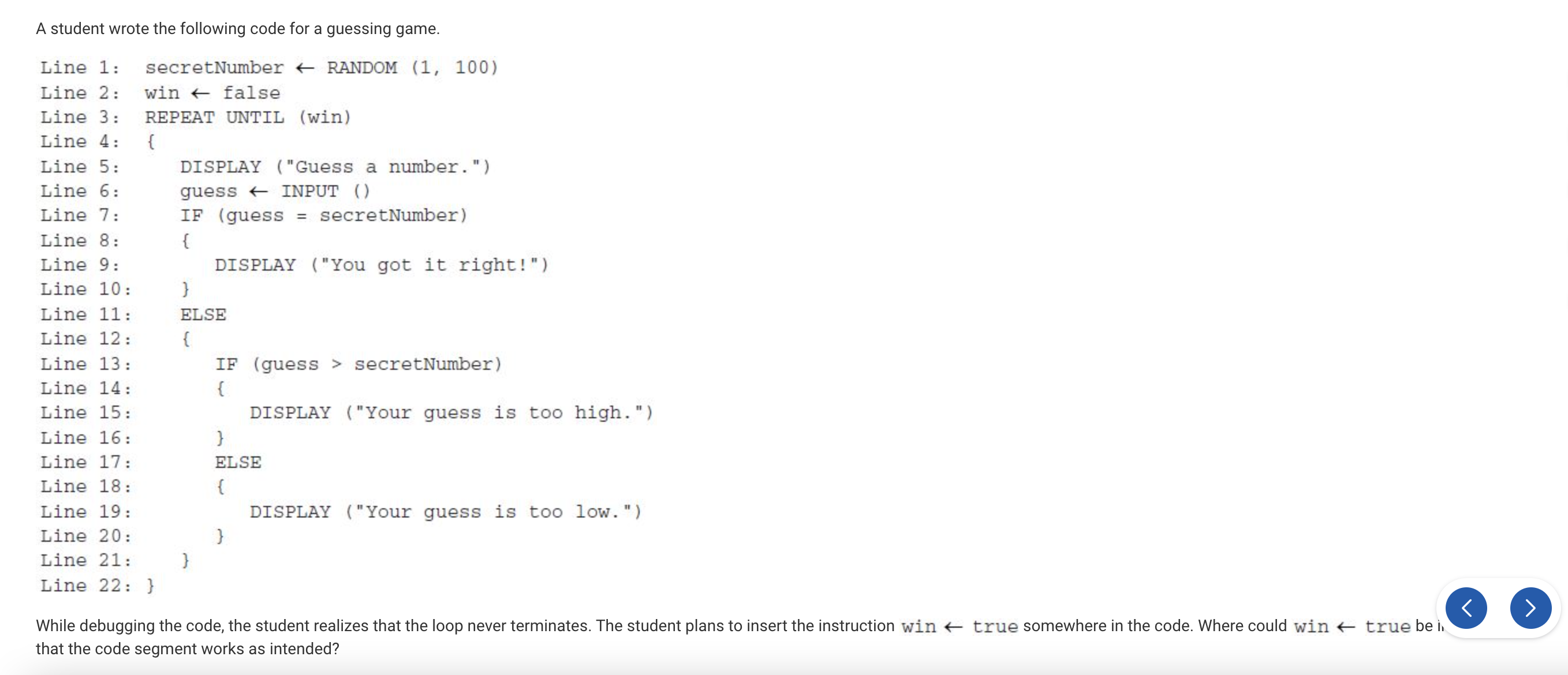
This problem stumped me for a quick second as I had to really dig deep and truly understand the problem in order to overcome it. Although it took me a second, I was able to quickly figure it out when I figured out what the program was trying to accomplish
Question 37
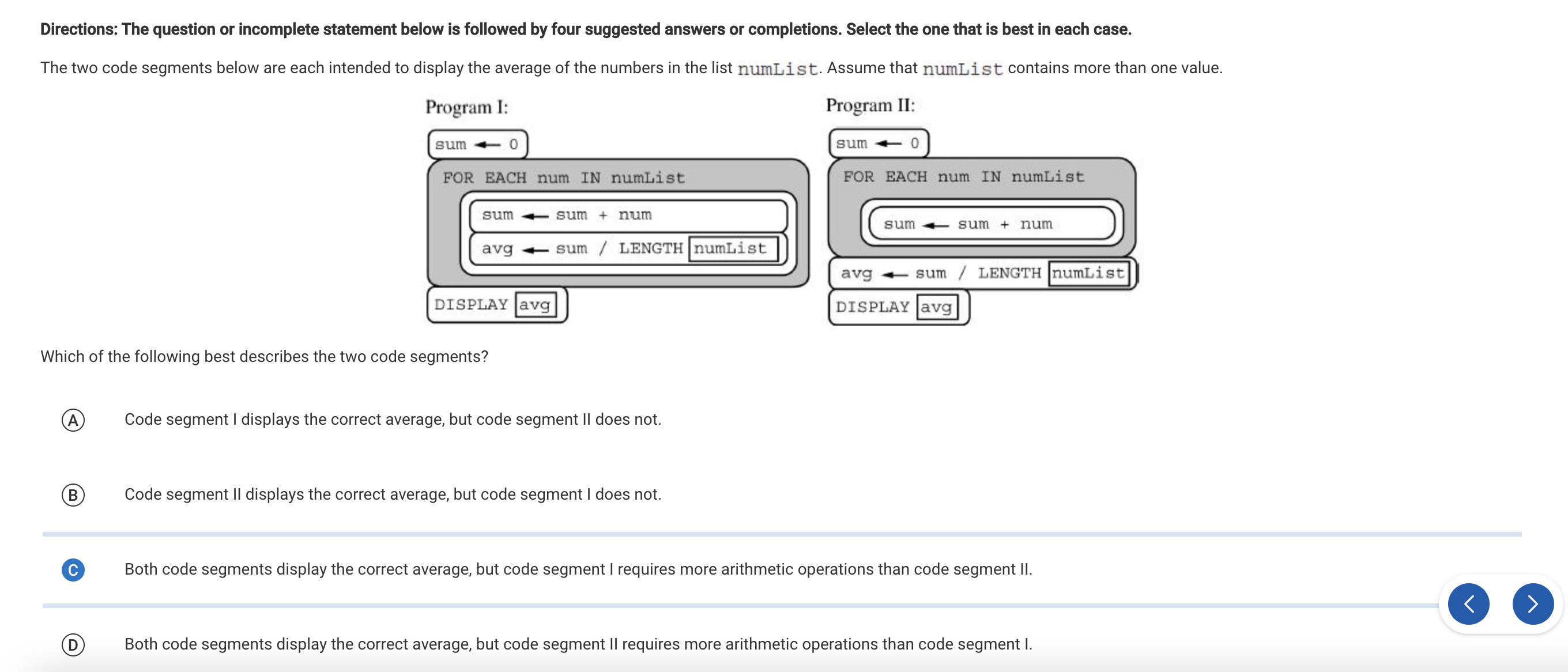
This problem required some thinking as I immediately noticed a difference but didn’t know how the difference affected the result. As I further analyzed each function, it seemed as though one took the average of the whole list, while the other took the average of the list after each value in the list. The first function would have more arithmetic steps, but both would achieve the same result.
Question 41

This question offered some thought as I had to figure out the best way to calculate the final score based on the algorithm in words. This question wasn’t too challenging, but was a fun brain puzzle as I had to figure out why the others didn’t work and why B was the most proper answer. To solve it, I need to find the hgiher score between the final and the midterm, and add that to the final exam score, because if the final exam score was higher than the midterm, it replaces the score.
Question 48
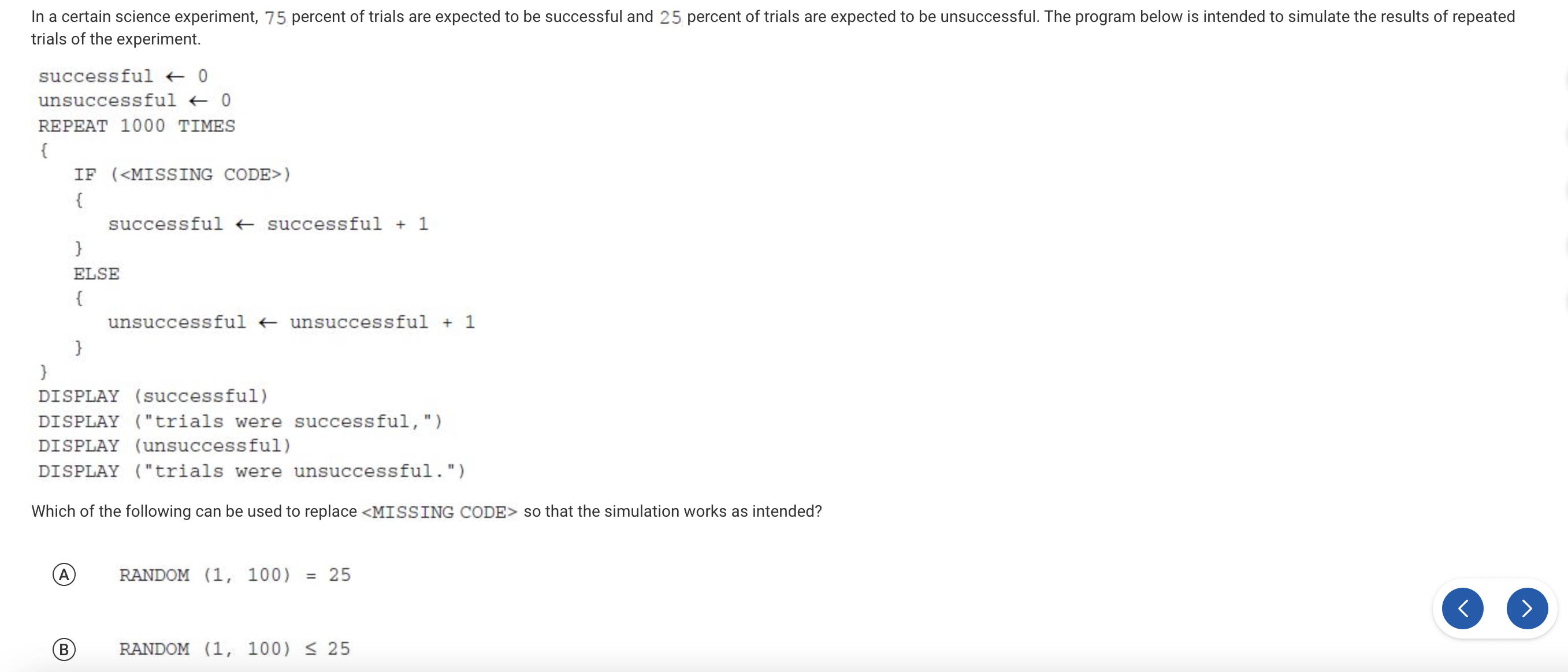
This question felt more like a word-logic problem, as it was more difficult to discern what exactly the question was asking. It took a bit to understand but with the random number being less than 75 out of 100, that will happen 75% of the time, giving us the result we wanted.
Question 52
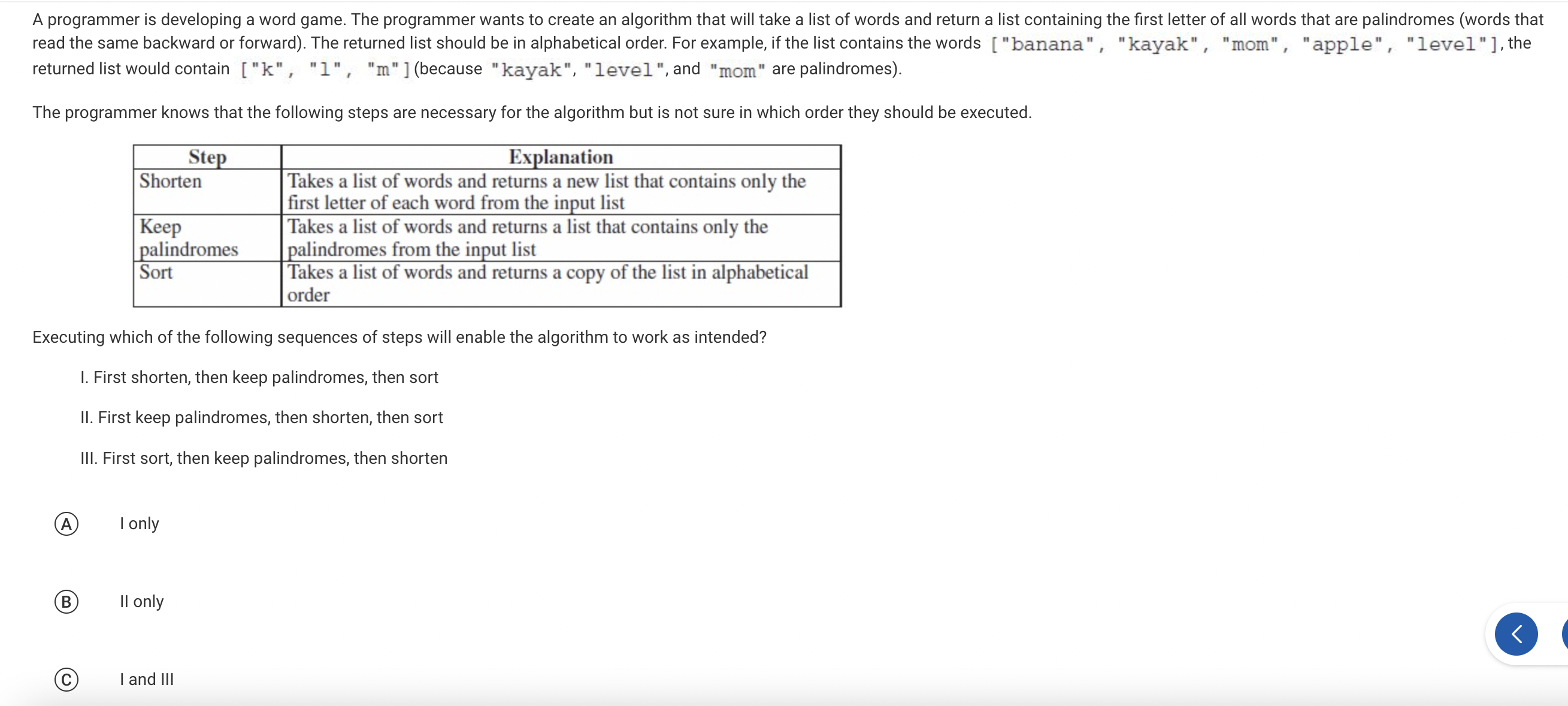
This question also proved to be a bit tricky but I realized that you can’t determine whether or not a word is a palindrome if you’ve already shortened it, but both others can be done in any order so thats why both procedures II and III are correct.
Question 61
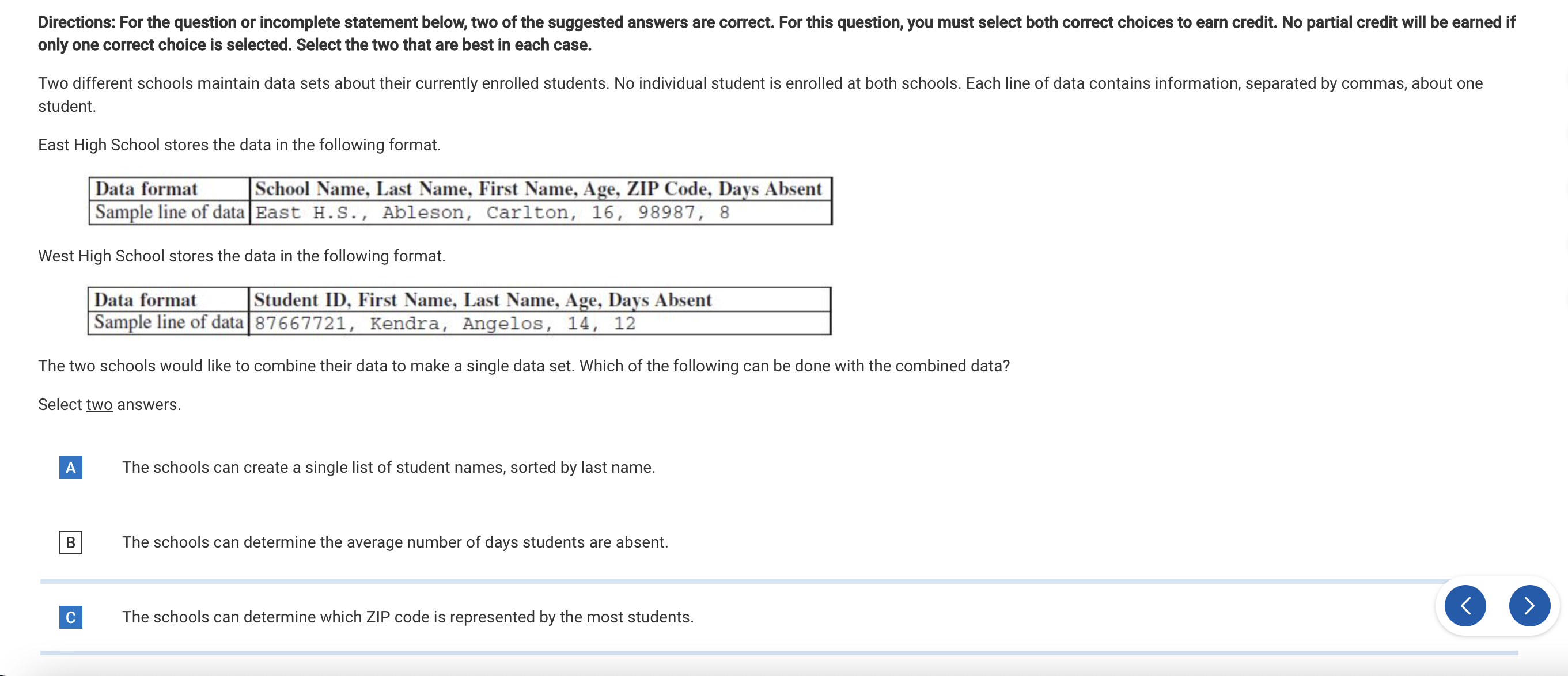
This question was interesting, as I was quick to rule out B, because determining the average amount of days students were absent would have no purpose, but I was stuck between the last two, but I think finding out the most prevalent zip code would be more important to a school than determining the student with the most number of absences.
Overview
This MC took me roughly 1 and a half hours to complete and I got a score of 57/66, but the MC questions were mostly very easy to figure out with just a little bit of thought. I highlighted above the ones that either took me the longest, or were the most interesting/fascinating to me, or were just a fun challenge to complete that I wanted to share my thought process of. I feel as though this MC did help me a lot with my understanding of pseudocode and helped boost my confidence for the AP test in March.